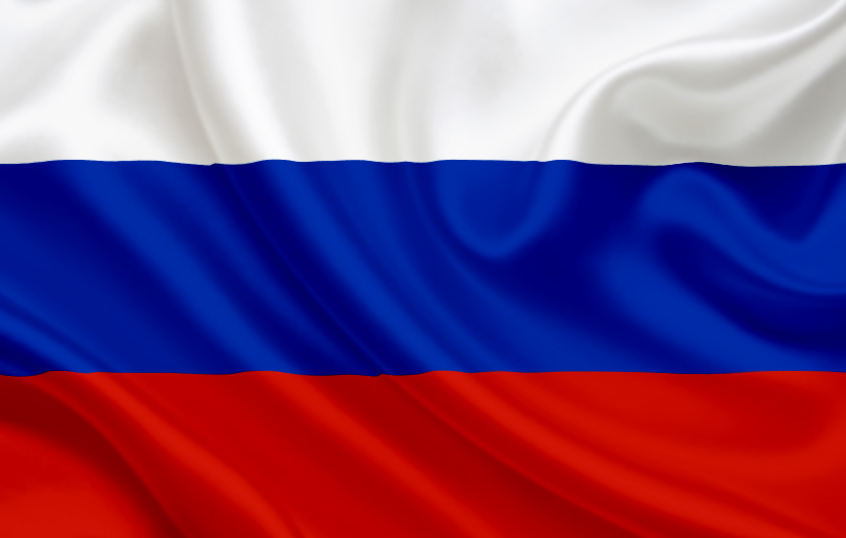The Russia National Flag is a symbol of the country’s rich history, culture, and traditions. It represents the struggles, victories, and achievements of the Russian people, as well as the country’s future aspirations. In this article, we will delve deeper into the history, meaning, and symbolism behind the Russia National Flag.
The Russian National Flag is a tricolor consisting of three horizontal stripes of equal width – white on top, blue in the middle, and red at the bottom. It was adopted on August 21, 1991, after the fall of the Soviet Union, as the official flag of the Russian Federation. The flag has since become a national symbol and an important part of Russia’s identity.
History of the Russia National Flag
The history of the Russian National Flag can be traced back to the 17th century. The first Russian tricolor was created in 1668, during the reign of Tsar Alexis Mikhailovich. It consisted of three horizontal stripes of black, yellow, and white. The flag was used as a naval ensign and was later adopted as the official flag of the Tsardom of Russia.
In 1917, after the Russian Revolution, the Soviet Union was formed, and the red flag became the national symbol. The red flag was a symbol of communism, revolution, and the struggle for workers’ rights. It remained the official flag of the Soviet Union until its collapse in 1991.
After the fall of the Soviet Union, Russia adopted a new flag that would represent its new identity as a democratic country. The new flag was designed by the artist Pavel Mikhaylovich Kuznetsov and was based on the colors of the original Russian tricolor.
Design and Colors of Russia National Flag
The design of the Russian National Flag is simple yet powerful. The white, blue, and red colors represent different aspects of Russia’s history, culture, and identity.
The white color represents purity, innocence, and nobility. It is also a symbol of the snow that covers much of Russia in the winter.
The blue color represents faith, loyalty, and truth. It is also a symbol of the sky and the many rivers and lakes that are an important part of Russian geography.
The red color represents courage, strength, and blood. It is also a symbol of the many battles and struggles that Russia has faced throughout its history.
Symbolism of Russia National Flag
The Russian National Flag is a powerful symbol of the country’s past, present, and future. It represents the struggles and victories of the Russian people, as well as their hopes and aspirations for the future.
The white stripe represents the country’s past, its rich cultural heritage, and its noble traditions. It is a reminder of the great achievements of the Russian people and their contributions to the world.
The blue stripe represents the country’s present, its strong and loyal people, and its commitment to truth and justice. It is a symbol of Russia’s desire to be a responsible member of the international community.
The red stripe represents the country’s future, its courage, and its determination to overcome any obstacles that stand in its way. It is a symbol of Russia’s strength and resilience and its ability to face the challenges of the future.
Protocol for Displaying the Russian National Flag
The Russian National Flag is an important national symbol, and there are strict rules governing its use and display.
When the Russian National Flag is displayed, it must be raised in the morning and lowered at sunset. It should not be flown in inclement weather or at night, unless it is properly illuminated.
The flag must be flown on all official buildings and at all official events, including national holidays and state ceremonies. When displayed with other flags, the Russian National Flag should always be in the center and at the highest position.
When the flag is displayed vertically, the white stripe should be on the left side. When the flag is displayed on a stage or platform, it should be placed on the speaker’s right side.
FAQs
- What is the meaning of the colors on the Russian National Flag?
The white color represents purity, innocence, and nobility. The blue color represents faith, loyalty, and truth. The red color represents courage, strength, and blood.
- When was the Russian National Flag adopted?
The Russian National Flag was adopted on August 21, 1991.
- Who designed the Russian National Flag?
The Russian National Flag was designed by the artist Pavel Mikhaylovich Kuznetsov.
- What was the previous national flag of the Soviet Union?
The previous national flag of the Soviet Union was the red flag.
- What are the rules for displaying the Russian National Flag?
The Russian National Flag should be raised in the morning and lowered at sunset. It should not be flown in inclement weather or at night, unless it is properly illuminated. It should be flown on all official buildings and at all official events. When displayed with other flags, it should always be in the center and at the highest position.
Conclusion
The Russian National Flag is a symbol of Russia’s rich history, culture, and traditions. It represents the struggles, victories, and achievements of the Russian people, as well as the country’s future aspirations. The white, blue, and red colors on the flag represent different aspects of Russia’s identity and serve as a powerful reminder of the country’s past, present, and future. As an important national symbol, the Russian National Flag should always be treated with the respect and dignity it deserves.
References:
- Embassy of the Russian Federation in the United States. (n.d.). State Symbols. Retrieved from https://washington.mid.ru/en/embassy/flag-anthem-and-emblem-of-the-russian-federation/state-symbols/
- Flags of the World. (n.d.). Russian Federation. Retrieved from https://www.crwflags.com/fotw/flags/ru.html
- Russia Beyond. (2018, June 7). The History of the Russian Flag. Retrieved from https://www.rbth.com/history/327542-history-russian-flag
